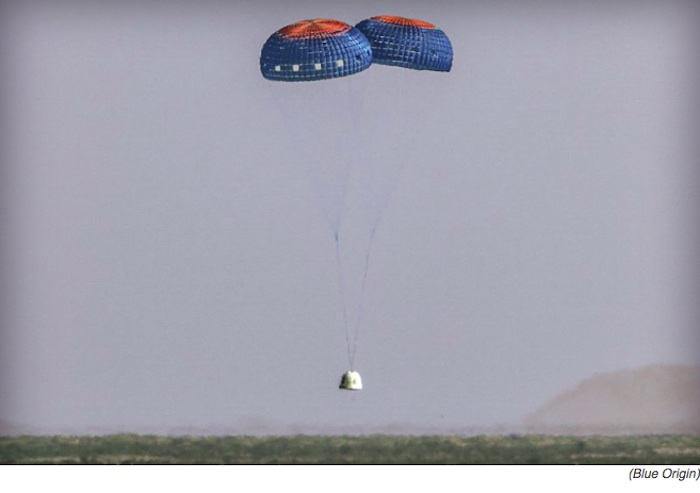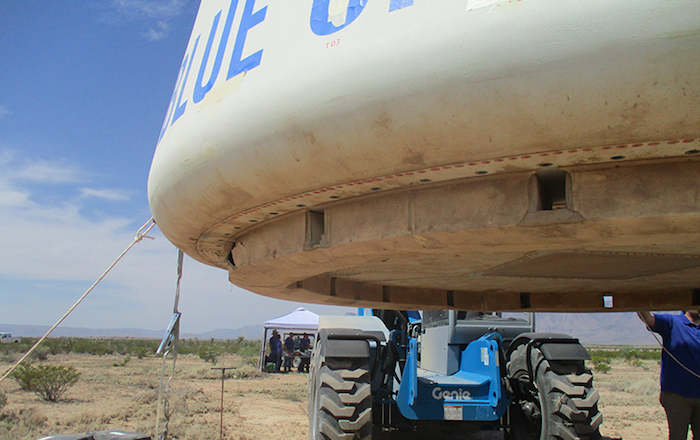.

Last month, private spaceflight company Blue Origin intentionally crash-landed part of its New Shepard rocket. The idea was to see if the vehicle could keep people safe in the event of a failure. The answer appears to be yes. CEO Jeff Bezos said in an email today that the company received good results from that crash landing, indicating that any hypothetical passengers onboard would have done just fine.
THE NEW SHEPARD IS BLUE ORIGIN’S REUSABLE SUB-ORBITAL ROCKET
The New Shepard is Blue Origin’s reusable sub-orbital rocket, designed to take six passengers up to the edge of space where they can experience a few minutes of weightlessness. The passengers are meant to ride inside a crew capsule that sits on top of the rocket. Once in space, the rocket and crew capsule separate, and both begin the descent back to Earth. The rocket portion of the vehicle reignites its engines to land upright on solid ground, while the capsule deploys parachutes to slow its fall.
That’s the ideal scenario. But for this most recent test, which occurred in June, one of the capsule’s three main parachutes intentionally failed to deploy. Blue Origin wanted to see if the capsule could still slow down and land gently enough to protect would-be passengers.
To do this, there are a number of systems in place to help the vehicle land. Just before touchdown the capsule’s retro rocket — a tiny engine on the bottom of the spacecraft — fires against the ground to slow the vehicle even more. And for further cushioning, the bottom of the capsule has a "crushable structure" — a ring of eight segments made of aluminum honeycomb material. This helps to absorb some of the capsule’s impact with the ground.
.

The crew capsule's crushable "ring" after the most recent test flight. (Blue Origin)
-
These systems, according to Bezos’ email, worked during the test, and helped to mitigate the effect of the lost parachute. Normally with three chutes, the capsule is slowed to a speed of 16 miles per hour before it fires its retro rocket just above the ground. With only two parachutes, the capsule was slowed to 23 miles per hour. The retro rocket compensated for the extra speed, and the crushable structure absorbed the remaining force of the impact. But the structure didn’t have too much to do. According to Bezos, the structure is normally 5.5 inches tall but it can be crushed down to just 1 inch tall. After the crew capsule landed, though, the structure was still more than 5 inches tall, meaning it barely had to crush at all.
Bezos noted that New Shepard can handle an even worse scenario than this one: the failure of two main parachutes. Blue Origin will continue testing out the vehicle through the end of the year, before starting the first crewed test flights of New Shepard next year. Erika Wagner, business development manager for Blue Origin, said that the company is flying the vehicle every eight weeks or so, but hopes to fly it much more frequently in the future.
.

The eight segments of the capsule's crushable ring after the test. (Blue Origin)
Quelle; THE VERGE
4813 Views
